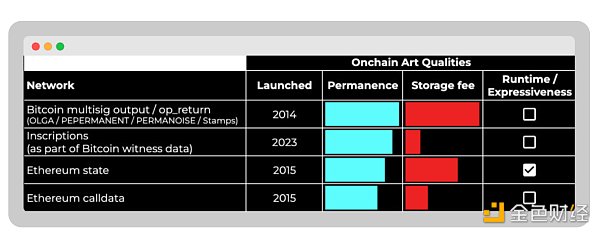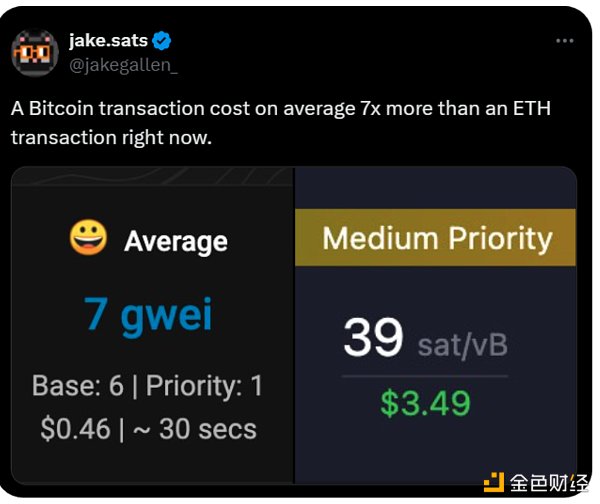Author: William M. Peaster Source: bankless Translation: Shan Ouba, Golden Finance
Recently, positive sentiment around Ordinals seems to have reached an all-time high. Similarly, the top Ordinals collections have also soared - currently, three of the top six NFT collections by market value exist on the Bitcoin blockchain in the form of inscriptions: Runestones, NodeMonkes, and Bitcoin Puppets. I have been tracking and writing about Ordinals since they first appeared in January 2023. From the early days until now, I have always considered Ordinals to be one of the most attractive tokenization methods in the Bitcoin space. I appreciate that it opens up new cultural areas and greatly increases the demand for Bitcoin block space. However, Ordinals are not perfect, and no non-fungible token (NFT) solution is perfect. As Ordinals have recently surged in popularity, I have seen some people say that "Ethereum NFTs are now meaningless because of Ordinals."
But the fact is that Ordinals has obvious advantages and disadvantages compared to Ethereum NFT and smart contract chain NFT at the technical level. So, what are the technical similarities and differences between the two? Let's conduct a detailed comparative analysis.
First of all, Ordinals' biggest advantage at present is cheap and permanent on-chain storage. As shown in the Chainleft comparison chart below, Ordinals has the best "cost-permanence ratio" among all NFT solutions.

However, ownership of Ordinals is tracked via an off-chain indexer - at this point, any smart contract chain's NFT is more robust, such as Ethereum NFTs, Solana NFTs, etc.
It should be noted that this is not always the case - many smart contract chain's NFTs also use off-chain storage, but not all. With the emergence of new methods in Ethereum, on-chain storage has become cheaper, and there are almost no limits on the combination of on-chain and off-chain technologies on Ethereum, everything depends on your imagination; in addition, Solana's compressed NFT technology is not strictly off-chain storage, which is worth mentioning.
In addition, NFTs on smart contract chains are also significantly better than Ordinals in terms of speed, with transaction confirmation speeds exponentially faster than the Bitcoin network, and transaction fees are generally lower, except in rare cases such as severe network congestion on Ethereum.

While recursive inscriptions open up a cool path for dynamism, inscriptions themselves are not “state-aware” and lack the programmability and on-chain runtime expressiveness that Ethereum NFTs have.
It is arguably this on-chain expressiveness that makes the NFT space so compelling today. The perpetuity possibilities it enables are infinitely combinable, and novel runtime projects like Terraforms could not exist without leveraging the strong backbone of this medium. The lack of this potential is a significant disadvantage for Ordinals.
However, on the other hand, it can be said that there are more NFT attack vectors on the smart contract chain, so from the overall risk point of view, Ordinals definitely has a certain advantage.

Looking a little deeper, Ethereum NFTs far dominate all other ecosystems in two aspects: tools and application scenarios. Nowhere else can you find more tools and resources for NFT creation than Ethereum, and nowhere else can you find more ways to play with your NFTs, from lending on NFTfi, to JPG games on Nifty Island, to gallery building on Deca or Decentraland, Voxels, etc.
Finally, NFTs on any smart contract chain are far more energy efficient and environmentally friendly than Ordinals due to the use of proof-of-stake mechanisms. The combined emissions footprint of Ethereum, Solana, Cosmos, Avalanche, Algorand, Cardano, and Polkadot in 2023 is estimated to be around 4,935 tons of CO2.
Even when added together, this only accounts for about 0.000014% of global emissions per year, and is far less than Bitcoin's CO2 footprint in the same period - it's just a fact.
Yes, all NFT schemes have their pros and cons, any analysis will bear that out, and I like what I see as the entire diversified chain NFT ecosystem. But my main point here is that it is a gross overstatement to claim that Ethereum NFTs are meaningless when contrasted with Ordinals.
Ordinals do some things better, smart contract NFTs do others better, and both have a place in the crypto economy. Ordinals may be at the peak of attention right now, but overall, smart contract NFTs are still more attractive in terms of technical capabilities.
So what is the end result? Both paths have a bright future, and the future will see more creators combining the two like Nate Alex has done with his project Natives. We can also expect further advances in infrastructure in the coming years, which will improve the user experience across the board.
 JinseFinance
JinseFinance









